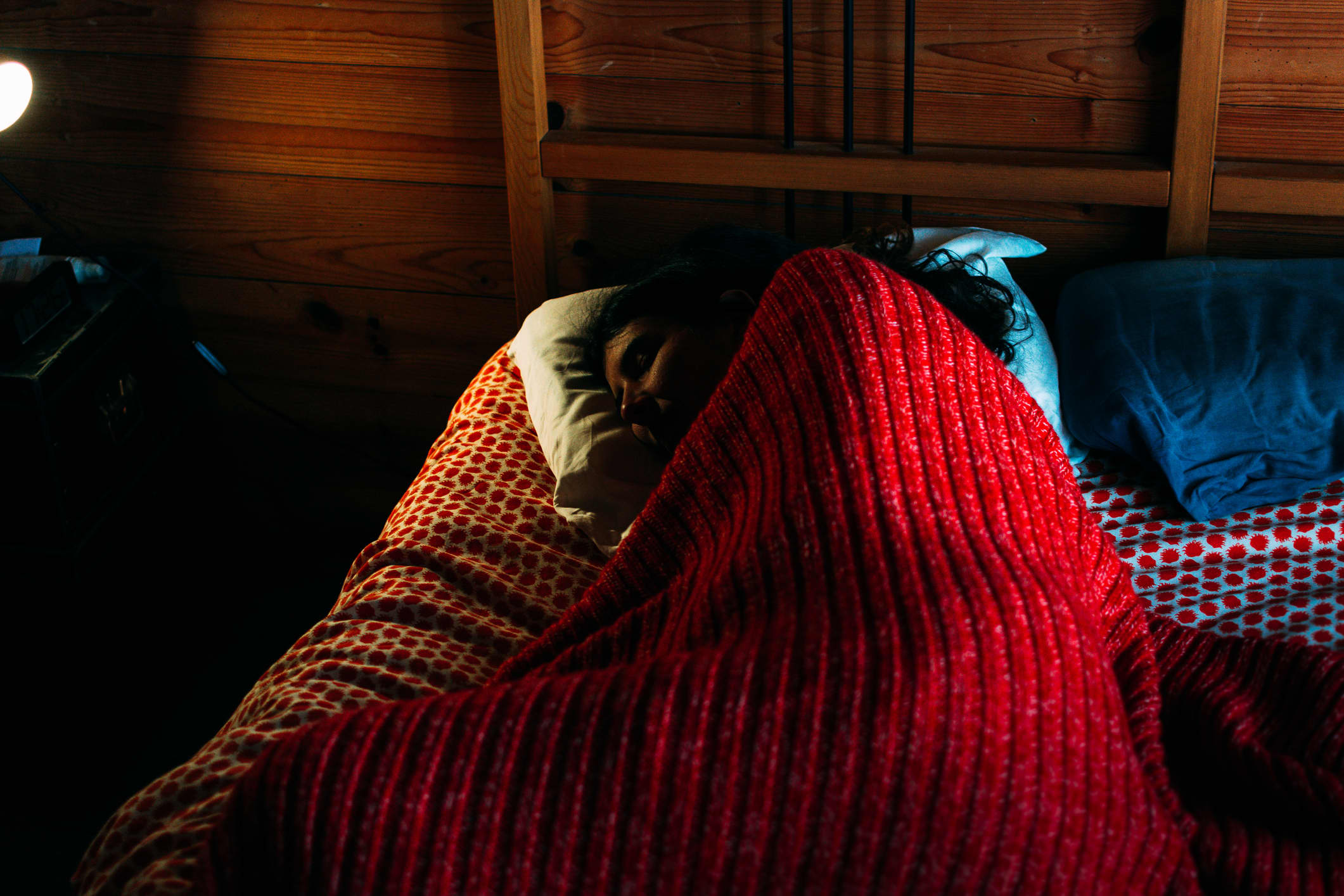On her quest to better understand how factors like when we eat and how much sunlight we get affect our ability to feel rested, happy and balanced, Lynne Peeples went 50 feet below ground for 10 days.
Peeples, a science journalist and author of “The Inner Clock: Living in Sync With Our Circadian Rhythms,” found an Airbnb in Arkansas that was once a bunker during the Cold War.
“This guy had purchased an old nuclear missile silo from the government and souped it up,” she said on an episode of the “Everyday Better with Leah Smart” podcast.
In the bunker, “there was no daylight,” she said. Peeples also got permission from the Airbnb host to cover all of the clocks on digital devices with black tape so she would have no idea what time it was down there.
The lights in the bunker were dim and red. “We know that red is the wavelength of light that least affects our circadian rhythms,” she said.
For her book, Peeples wanted to explore what would happen to her internal clocks “if I cut myself off from those cues that they need to tell time.”
During her stay, Peeples documented her experience via voice recordings with the plan to use the timestamps to see how closely she aligned with her typical schedule — like when she ate breakfast or when she went to sleep.
“For the first couple days, it was miraculous because I could look later at timestamps from voice recordings that I made, and I was pretty accurate in living a 24-hour day,” she said. “Our clocks inside of us do keep pretty good time.”
But about halfway into the experience, Peeples began to feel “really out of sorts” which she likened to major jet lag.
“At the ‘worst,’ I was completely flipped. I was living my day when everybody else above ground was sleeping. So, I was close to 12 hours off,” she said. “I felt the effects of that.”
Peeples began to experience moodiness, “feeling hot and cold,” and hunger once her internal clock wasn’t well-synced to her usual schedule. She also noticed that her thinking was more clouded, and she was clumsier than usual.
“Not that it wasn’t expected, but to really feel that, it was pretty profound.”
When your circadian rhythm is out of sync, you can experience fatigue, insomnia, headaches or even depression, according to Cleveland Clinic. The results of Peeples’ experiment further proves what research has shown about how certain factors like exposure to sunlight can affect your circadian rhythm.
“To keep that calibration, it is about getting adequate bright light, especially in the morning,” Peeples said.
“Within the first hour or two upon waking up, if you can get your eyes exposed to bright daylight,” you’re in good shape.
Go for a 15-minute walk in the morning, and “be as close to a window as possible throughout the day,” she suggested. At night, dim the lights in your home as you near bedtime to prime your body for bed.
Aligning your lifestyle with the 24-hour cycle is vital for your body’s functions including processing foods correctly and “priming our immune system” to fight off certain pathogens. It’s the best way to “keep all those body systems doing a better job of doing the right things at the right times,” she said.
Peeples also provided a list of things that can disrupt your circadian rhythm, and affect more than just your sleep quality and quantity:
- Darkness during the day
- Too much light at night
- Eating at the wrong times of the day (snacking whenever)
- Changing the time on our clocks twice a year, when we “fall back” and “spring forward“
- Traveling across time zones
Want to up your AI skills and be more productive? Take CNBC’s new online course How to Use AI to Be More Successful at Work. Expert instructors will teach you how to get started, practical uses, tips for effective prompt-writing, and mistakes to avoid. Pre-register now and use coupon code EARLYBIRD for an introductory discount of 30% off through February 11, 2025.
Plus, sign up for CNBC Make It’s newsletter to get tips and tricks for success at work, with money and in life.
International: Top News And Analysis
Read the full article <a href="Read More” target=”_blank”>here.


